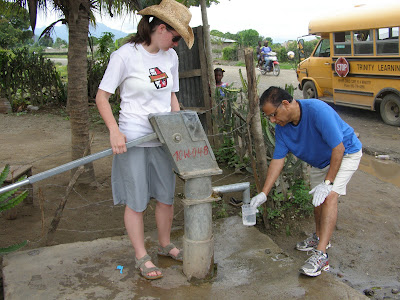For the second time in just three years, we are facing a global food crisis as a result of rapidly rising food prices. In developing countries, where individuals often spend half of their income on food, record high food prices have pushed 44 million people into extreme poverty and hunger since June of 2010. As the world’s population grows, spikes in food prices are expected to continue, and important safety nets such as emergency food aid will not be able to keep up.
CTI is committed to creating inventive, sustainable solutions to address these challenges. Simply growing more food is not enough—not when between 15-50% of crops are lost after harvest, often due to post-harvest spoilage and inefficient processing methods.
CTI is committed to creating inventive, sustainable solutions to address these challenges. Simply growing more food is not enough—not when between 15-50% of crops are lost after harvest, often due to post-harvest spoilage and inefficient processing methods.
In our Saint Paul workshop, CTI’s engineers have developed a prototype grain processing system that significantly reduces post-harvest losses, essentially doubling the amount of pearl millet grain farmers can produce. Though we are thrilled with the results, gaining access to pearl millet grain for testing prototypes has been a challenge. Pearl millet may feed 500 million people in Africa and Asia, but you won’t find freshly harvested pearl millet to test in Minnesota. While some grain stocks have been made available from generous donors such as USDA in Georgia, without ready access to pearl millet and other African crops, CTI’s engineers often have to send even initial prototypes oversees for testing during harvest seasons — a costly, slow process and a barrier to innovation.
The Lost Crops of Africa project is a collaboration between CTI and the University of Minnesota (UMN) to grow seven African crops on one acre of land at UMN’s Saint Paul campus. With assistance from Professor Paul Porter and student assistant Tiffanie Stone, CTI will grow tef, finger millet, sorghum, fonio, pearl millet, grain amaranth, and groundnuts for processing. Although these crops are often unheard of by those living in more developed countries, they are commonly grown in different parts of Africa, where millions of people depend on them for their daily sustenance.
CTI will use the harvested African crops to develop and test post-harvest farming devices and tools for subsistence farmers. Growing the crops so close to home will allow our engineers to more easily refine new equipment to suit a particular crop. This way, when CTI brings new prototypes to Africa, we can minimize last minute “surprises” and reduce the time needed to reach user-acceptable solutions. Ultimately, this means CTI will be able to deliver more appropriate technologies faster and at a lower cost to our donors and our end-users.
In addition to the one acre plot of land, UMN has generously provided a student assistant to help oversee the Lost Crops of Africa program. Tiffanie Stone is studying Applied Plant Science and International Agriculture at UMN. Tiffanie will be contributing to CTI’s blog, where she’ll write updates on the challenges and triumphs that are thrown our way.






